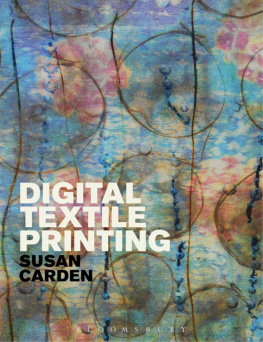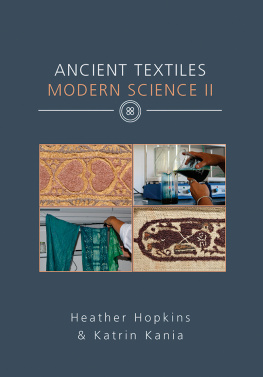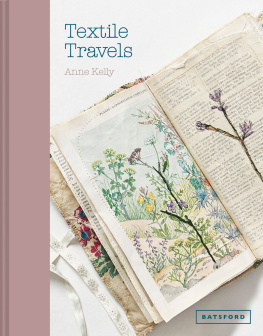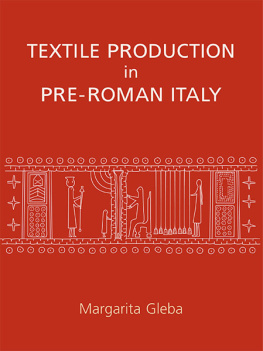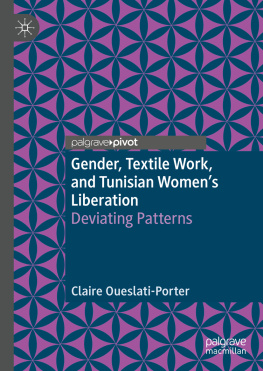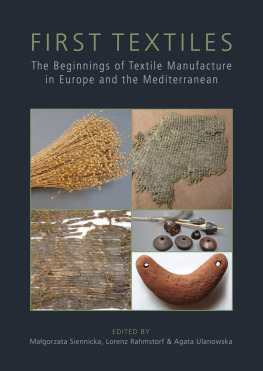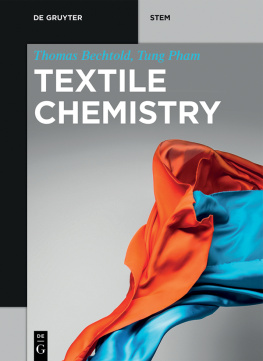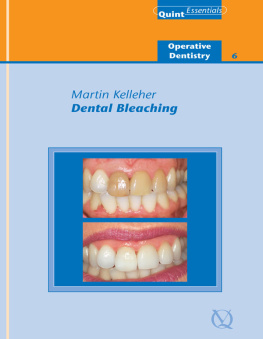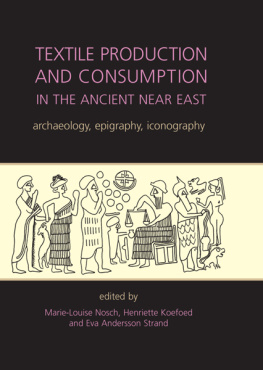THE CHEMICAL TECHNOLOGY OF
TEXTILE FIBRES
THE CHEMICAL TECHNOLOGY
OF TEXTILE FIBRES
THEIR ORIGIN, STRUCTURE, PREPARATION, WASHING,
BLEACHING, DYEING, PRINTING, AND DRESSING
BY
DR. GEORG VON GEORGIEVICS
PROFESSOR OF CHEMICAL TECHNOLOGY AT THE IMPERIAL AND ROYAL STATE TRADE SCHOOL, BIELITZ
TRANSLATED FROM THE GERMAN
BY
CHAS. SALTER
WITH FORTY-SEVEN ILLUSTRATIONS

PREFACE

IN the present volume, dealing with the Chemical Technology of the Textile Fibres (except as concerns the dye-stuffs, which will be treated in a separate work), the author has been obliged to condense the available matter as much as possible, in order to preserve the form of a text-book.
Nevertheless, it seemed necessary, in certain cases, in the interests of the book, to give definite data and an exact description of individual processes. In such instances the details have been gathered exclusively either from the authors personal experience or from reliable sources.
The most important part of the book is the chapter treating of dyeing, whilst, on the other hand, the subject of printing had to be dealt with in a more general fashion, the materials being less suitable for treatment in text-book style.
The author thinks it desirable to point out that in the present work an attempt has been made to completely separate the chemical and mechanical technology of the subject, a standpoint he considers justified by the extensive area occupied by each of these branches. Hence only a few sketches of apparatus have been given; and the methods of dressing the finished goods have been described very briefly, since they almost entirely belong to the domain of mechanical technology.
The author is indebted to Prof. J. Zipser for the whole of the sketches given, and to Mr. C. Schimke, teacher of dyeing at the Eoyal State Trade School, Bielitz, for much assistance in the production of the book.
GEORG VON GEORGIEVICS
TABLE OF CONTENTS

THE CHEMICAL TECHNOLOGY OF
TEXTILE FIBRES

CHAPTER I
THE TEXTILE FIBRES
THE name textile fibres applies to such structures as, in consequence of their physical properties, are capable of being spun and worked up into textile fabrics. These fibres are supplied by all three natural kingdoms, and a few of them are also prepared artificially.
Although nearly a thousand textile fibres are known, only a few of them are of real interest. These are cotton, wool, and silk, followed by flax, jute, ramie and hemp, in a minor degree.
They are divided into four groups:
1. Artificial fibres.
2. Mineral fibres.
3. Vegetable fibres.
4. Animal fibres.
1. ARTIFICIAL FIBRES.
To this series belong spun glass, metal thread, slag wool, and artificial silk.
Spun Glass.When a glass rod is heated in the flame until perfectly soft, it can be drawn out in the form of very fine threads, which are used to a small extent in the production of very handsome silky fabrics (cravats, etc.) As spun glass can also be produced from coloured glass, the same method can be applied to the production of coloured fabrics. In consequence, however, of the low elasticity of these products, their practical value is nil.
For many chemical purposes, e.g. as filtering material for strongly acid liquids, a curly kind of glass wool is produced by drawing out two glass rods of different degrees of hardness to a capillary double thread. On cooling, these curl up in consequence of the different construction of the two constituent threads.
Metallic Threads.From time immemorial fine golden silver threads, as well as silver gilt and silver threads or copper wires, have been used for decorating particularly rich fabrics. Thus the so-called Cyprian gold thread, so renowned for its beauty and permanence in the Middle Ages, is now produced by covering flax or hemp threads with a gilt skin.
Slag Wool.Molten slag is run into a pan fitted with a steam injector, which blows the slag into fibre and furnishes a product which is used to a small extent as a packing material.
Artificial Silk.This product, which is the most interesting of all the artificial fibres, will be described along with Cellulose.
2. MINERAL FIBRES.
To these belong Asbestos. This is a decomposition product of serpentine, and is, chemically speaking, a silicate of magnesium and lime, containing in addition iron and alumina. It is found in Savoy, the Pyrenees, Corsica, Mount St. Gothard, etc., and large deposits have recently been discovered in northern Italy and Canada.
Asbestos forms long, white, glassy fibres; some kinds, however, e.g. Canadian, are somewhat curly. Alone it is difficult to spin, and is therefore mixed with a little cotton, which is subsequently got rid of by heating the finished fabric to incandescence. Asbestos fabrics of this kind are generally used where exposure to high temperature is necessary, e.g. for packing steam cylinders and hot machine parts, also as a fire-proof material in the manufacture of numerous theatrical requisites, etc. Asbestos is difficult to dye; for this purpose the albumen dyes and substantive dyes are used.
3. VEGETABLE FIBRES.
These are supplied in large numbers by the vegetable kingdom. They are divided into three classes:(a) Seed hairs. These comprise cotton, the whole of the cotton tree, vegetable silk, etc. (b) Bast fibres, forming the cambium layer of dicotyledonous plants, e.g. flax, hemp, jute, ramie, Sunn hemp, etc. (c) The vascular bundles from leaves, stems, or roots of monocotyledonous plants, e.g. New Zealand hemp, Pite or Agave fibre, Tillandsia, pineapple fibre, Manila hemp, true aloe fibre, etc. etc. Vegetable fibres contain cellulose as their fundamental substance, in addition to which they are (or at least some of them) more or less lignified. The larger the proportion of woody matter they contain, the greater their brittleness. Finally, they also contain in their cells and interstices so-called encrusting materials (ethereal oils, resins, starch, colouring matter, etc.), and ash.
As this substance forms the main constituent of all vegetable fibres, a knowledge of its chemical behaviour is of great practical importance. The vegetable fibres, even when in a pure state, do not behave entirely alike towards chemical reagents. Thus, for example, cotton has a greater power of resistance to bleaching powder solution than flax. The name Cellulose must therefore be considered as a generic term applying to several bodies of very similar nature. Cellulose is a colourless, inodorous, and tasteless substance (sp. gr., 1.27 to 1.45), which is insoluble in ordinary solvents. It belongs to the carbohydrates, and its percentage composition is expressed by the formula C6H10O5, though its true formula is certainly a multiple of this.
Next page

